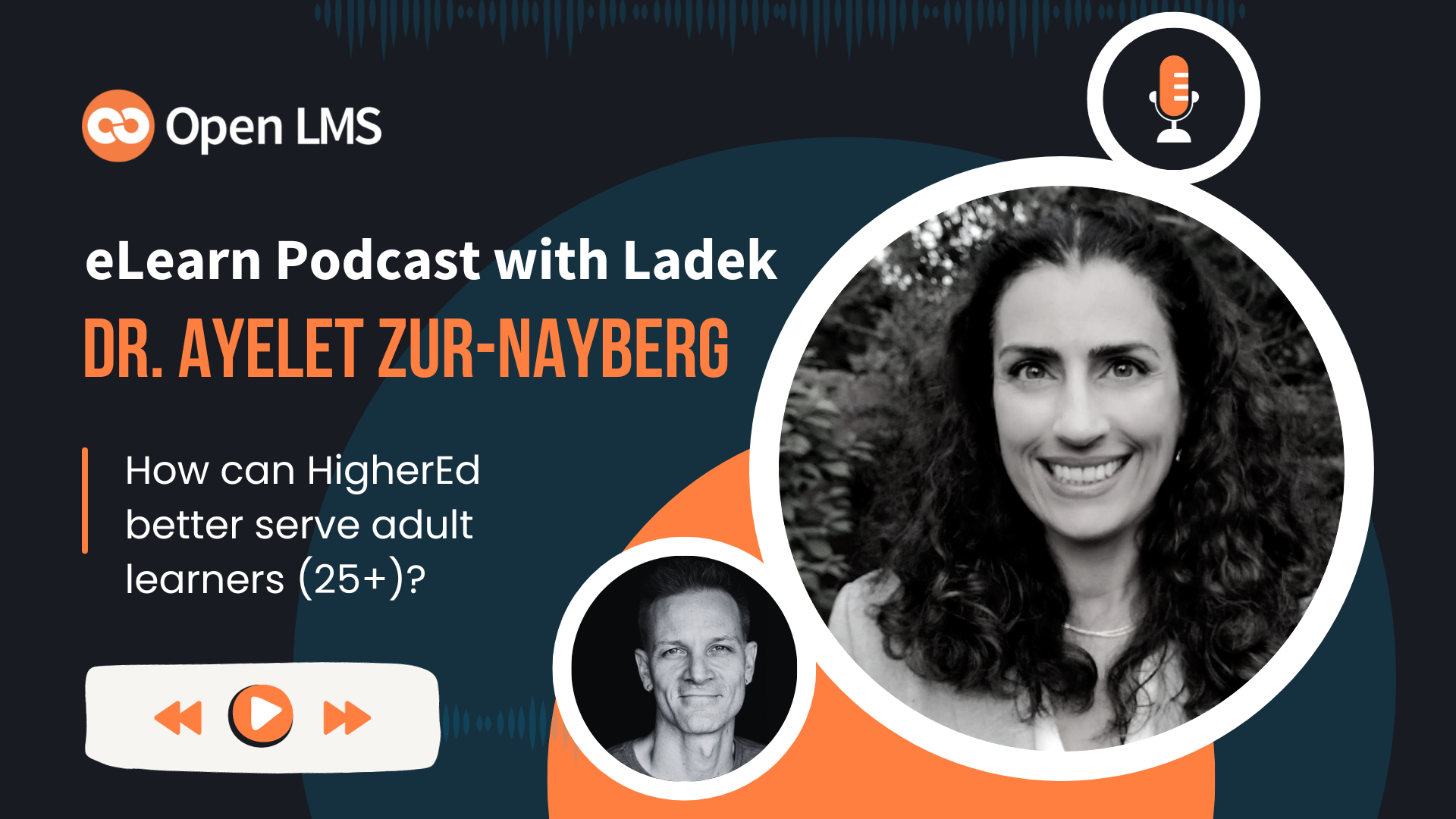Updated On February 7th, 2020.
It seems the industry finally got the memo. Video continues to grow as the top engagement medium. A new LMS Video Platform launches every so often, hoping to make a dent in a space eager for disruption. We love all-round Open Source BigBlueButton, you may not. Kaltura and Panopto seem to gain popularity as of recent. Warpwire or Bongo are examples of niche plays. uQualio aims to become so good at video it might want to get you doubt if you need an LMS in the first place. And will someone else get the last mover advantage?
As it is the case with relatively complex tech, it is just not possible to draw the best LMS video platform out of the box and see results straight up. I wish it was that easy! Strategy, planning and implementation come first, and rushing things can simply be frustrating no matter the tool you end up with. It’s okay. All this time we’ve been walking, and video is a motorized vehicle. Keep a few basics in check, keep your eyes on the road, and your learners will be set for an amazing trip.
What kind of ride do you want to be on?
Think about it for a sec: Do you need a motorcycle, a bus, a monster truck? We are still at an early stage of full-fledged, widespread video in learning. It means the industry has not settled on what the basic standards for an LMS video platform are. This is a challenge when it comes to choosing the best LMS video platform for you
It makes our warnings about the shiny stars in ratings and review sites very relevant. But with this guide, we hope you find the right one.
YouTube for Schools? Why no video platform it’s a great (and a terrible) idea
The best LMS Video Platforms are the one that cater to your needs. Which begs an obvious question: What do you need? Do you even need one right now? It depends on how prominent video features in your learning and business strategy. If you don’t have one yet, and all you want is to explore the possibilities of video in education, keep it simple. YouTube, Vimeo or TeacherTube will do fine.
So how deep does your video platform urge go? Let’s find out:
First floor: I just want to share some cool videos with my students
Want to find the perfect TED Talk YouTube can offer? I hear there is always one. Show the great, introductory “101” series by NatGeo? Talk about the latest in space exploration and how it relates to your classroom subject? Cat videos for kids? (For a debate on their social and cultural implications, of course.)
No need for anything else than a link to the video. Most modern LMS today automatically embed the video on the page. In this case, an additional platform for a popular video site like YouTube could actually undermine the experience for your students. If they are frequent users they can add your videos to their playlist and watch it on the mobile app, even when they are offline. YouTube media production tools are superior too. Video analytics have no match. This also applies to the app. You can monetize your content, or restrict it. You have to let them store your content. But so do most other platforms.
Second floor: I want to make and share videos quickly, maybe encourage my students too
On this floor, built-in video and audio recording are LMS essentials. Some plugins or add-ons can give you an extra oomph in bells, whistles, speed and performance.
But wait! If all you want is to record yourself on a webcam for your students, let me interest you in live conferencing tools! In terms of simplicity and quality, BigBlueButton is a safe and sound choice. At least stack yor choice against its features. (In terms of price too: BBB is open source and you can deploy it on your server for free.)
Now, if you want your students to record themselves, social media is becoming the default choice. Instagram is currently edging in teen popularity. YouTube can also be considered a social network, in fact second only to Facebook in total traffic. Video-only social network TikTok, a is growing, especially in Asia. But its future is uncertain. (Remember Vine? Neither do we.)
Third floor: I want to build a content library for easy video deployment
Then this is the guide for you. Your choice will be down to your budget, desired features and needs. Read the next section for some basic requirements and features you might want to be aware of, and how some popular solutions fare.
Fourth floor: I want a platform that helps me align my video strategy with my operational goals
Now we are talking! Welcome to the highest floor, where you are one of few guests. You want LMS Data, Analytics dashboards, recommender systems and other next-gen solutions. The sky is the limit. This guide might be too basic for you, and so could be the bespoke solutions in our list. You might want to reach out to an experience partner with consulting experience.
LMS Video Platform factors and features really worth your attention
Some are more obvious than others. Feel free to chose, disregard and give them more or less weight at your leisure. In fact, a “rubric” approach could come handy.
Cost
The lack of standards for LMS video platforms makes cost comparisons very confusing. It makes the link between per-user price and feature set very hard. A fact vendors may use to their advantage. As a result, marketing ends up being the main source of customer education.
Creator Experience
I admit it. The following three factors are not as clear-cut as you might need them to be. The truth is, there is a known issue that affects platforms as they must serve a higher number of diverse users. Flexibility is key. But then the challenge is making more features easy to use without crowding your screen. This diversity persists within user types.
It is not expected that a majority of the users in a platform become creators. Yet the few who do should expect for simple upload and editing options.
You will be hard pressed to find a video platform that excels at video production and is good enough at the others. Professional video makers would not replace their high-caliber tools.
Curator Experience
It is common for video platforms to advertise themselves as “Libraries.” Meaning this one should be one of the feature at which they excel. A “curator” is most likely a teacher, but other users could play the role. A basic feature set includes, but is not limited to:
- Easy pick and choose videos to save into folders or playlists.
- Quick search, ideally with operators and comprehensive filters.
- Metadata: Allow to edit title, description, tags and keywords.
- Sharing and controlling who can see the curation.
Learner Experience
Another essential set of components. Look out for features such as:
- Easy loading and playback. Big, beautiful buttons is not asking too much.
- Track watched videos. Resuming where they left off a previous session is a great plus.
- Easy bandwith throttling. Use the video’s best resolution whenever possible. But convert to lower to keep the user from guessing.
- Optionally: “Star” videos or save them as favorites.
Compliance
A method to handle DRM (Digital Rights Management) issues is a must in this reality. The same goes for manual or automatic content moderation tools. The ideal platform is one that makes you worry as little as possible about these issues.
But there is a warning to be made about about excessively controlling platforms. The current “Copystrike” system is the bane of a YouTube creator’s existence. Arbitrary “demonetization” is a growing fear for the best educational YouTube channels, even the most original and user-safe.
Accessibility
We cannot stress this enough. Accessible content is good for everyone, and it’s good for business. Hopefully your video platform is aware of it.
In practical terms, it can mean:
- Closed caption support. Automated subtitle generation would be ideal.
- Compliance, starting with WCAG 2.0.
- Compatiblity with assistive devices. (Accomplished mostly by the previous item.)
- High-contrast menu options.
Support
Good customer support is essential for solutions that provide their own hosting platform. It’s also the reason why high-level LMS-Video platform vendor partnerships are so popular. These allow you, for example, get support for both plaftorms through the same medium.
Offline access, mobile access, or mobile app
One-level beyond throttling features, offline access can be a godsend. Ability to download videos is an obvious solution. This, unfortunately, can run into DRM and other compliance issues.
Is your learning closer to classical, direct instruction? Make sure this is something your community actually needs, as it can be an expensive feature. Conversely, hybrid or blended learning techniques, including flipped classroom, could find these a wortwhile addition.
Top LMS Video Platforms in 2020
The following solution more or less comply with the basic features mentioned before. They are known to work with with the top LMS (Canvas, Blackboard and Moodle). Kaltura, Panopto and BigBlueButton also support REST API and video analytics.
Apereo Opencast
By the creators of Sakai LMS, Opencast is a flexible, Open Source solution to capture, process, manage and deliver video. Its high level of flexibility makes it valuable for basically every use case, but its adoption is hindered by the great deal of customization it requires to get it started. Properly set up, however, it’s capable of highly effective workflows and metadata-rich repositories of content to deliver seamlessly across YouTube as well as any API-compatible platform.
uQualio
uQualio flips the script, by enticing you into an LMS by way of a compelling video experience. Pedagogically thoughtful, it comes with a set of tools intended to increase the effectiveness of your video lessons: Bite-sizing, gamification and interactivity are only its more visible features. It aims to solve the perennial problem of user onboarding. You might end up seeing lots of uQualio-hosted videos across landing pages promoting new software! It is without a doubt one of the most comprehensive new tools in town. Sign up for a free trial.
Kaltura and Kaltura Community Edition
Kaltura can refer two things. One is the Open Source application, named Kaltura Community Edition Video Platform. (Also known as Kaltura SE.) It’s free to download and easy to deploy, customize and integrate via API. You can find more at kaltura.org.
Then there’s Kaltura Corporate Solutions for Education. They include features like cloud-hosted libraries and repositories, or lesson capture. Kaltura Mediaspace is the ready-made hub to showcase corporate video, hassle free. Kaltura CaptureSpace Desktop Recorder, an application for Windows and Mac, comes free. It supports up to 4 multiple-stream recording. For Moodle, you can integrate Kaltura to the LMS using the plugin family build at Yamaguchi University. They are compatible with both free and premium license, but they are unofficial and unsupported by Kaltura.
Panopto
Self-claimed enterprise video leader Panopto is another “Video CMS.” It also offers cloud storage and streaming. Added-value features include custom case examples. (Flipped Classroom seems to be one of its big plays.) Panopto admits to be built for the “high end” spectrum of organizations, in terms of video usage and budgets. Only those with ambitious implementations of video capture, storage and continuous delivery will see the benefits of a Panopto implementation. User friendly interfaces, deep analytics and seamless integrations are some of the features Panopto wants to be known for. Examples of successful use of Panopto include Yale University, The Hong Kong Polytechnic University throught its flipped classroom practice; the Hong Kong Academy for Performing Arts, and the National University of Singapore (NUS), which records every lecture taught at any classroom on campus, every student discussion, and every office hours session.
I first learned about Panopto thanks to a link to the incredible Child Poverty and Neuroscience in a Global Context conference. The event was hosted by UPenn’s Center for Neuroscience & Society while a full recording is hosted by Panopto UPenn cloud. I wish I knew how to download Panopto videos! The institution can set the content public, Panopto login users only, or private. So while “Panopto UW” can offer you some interesting content, “Panopto Duke” or “Panopto UIowa” may not.
Bongo (Formerly YouSeeU)
“Video assessment and soft skill development platform” Bongo
This “Video Assessment Platform” just became the third Moodle Premium Integrator, and second second to BigBlueButton for video solution. While it focuses on video assigments and soft skills development, it offers many features found on general-purpose platforms. Live virtual classrooms or group sessions are an example.
If you want to learn more about Bongo and the Moodle integration opportunities, check out this webinar on March 13.
Warpwire
Up-and-coming video platform Warpwire has a surprisingly extensive feature set, including third-party authentication (OAuth 2.0), batch upload, throttling, in-video caption search, and lots more. Moodle Partner eCreators CEO claims Warpwire “is lightweight but packs a serious punch.” in a press release announcing a key partnership.
Arc (Canvas exclusive)
Thoroughly hyped “next-generation online video learning platform” Arc offers drag-and-drop functionality to embed video into online lessons. Students can comment on the video as they watch. Teacher can follow video behavior and choose a different video if necessary.
Bonus: Free and Open video repositories worth checking out
The Open Video Project. Its interface is a legacy of the dial-up era. And perhaps its Mission alludes to a simpler time, too. One where unbridled access to the world’s information would be at everyone’s doorsteps. Reminisce about your youthful internet ideals in the founding paper abstract, published at the Proceedings of the fifth ACM conference on Digital libraries in 2000. Then check out some free vids at open-video.org.
OER Commons Video Selection. The largest and boldest directory of Open Educational Resources we know lets you filter by format type. Nearly 10 thousand items in video format (at writing) can be filtered by a broad criteria set, from language and subject to educational standards. (Common Core included.)
Archive.org Moving Image Archive. A comprehensive repository, often the only source for many public domain media, is the video section of this project led by nonprofit The Internet Archive. Also known as the Wayback Machine. It lists 4 million videos, 1.6 of them are TV news shows from recent and past history.
The Public Domain Review Film Collection. A non-comprehensive, but aptly curated selection of items owned by all humanity, that at one time were deemed either curious or wondrous by the volunteer staff. Find 122 film, mostly old movie.










One Response
We are using Teachr LMS. A Suitable LMS platform for both the Academic and Corporate industry. One Of the best and simple to use LMS for corporate training. Offering online and video-based learning teaching facilities. Teachr LMS provides virtual, classroom, gamification, social and e-commerce features in a safe and secure environment that can meet all training needs.